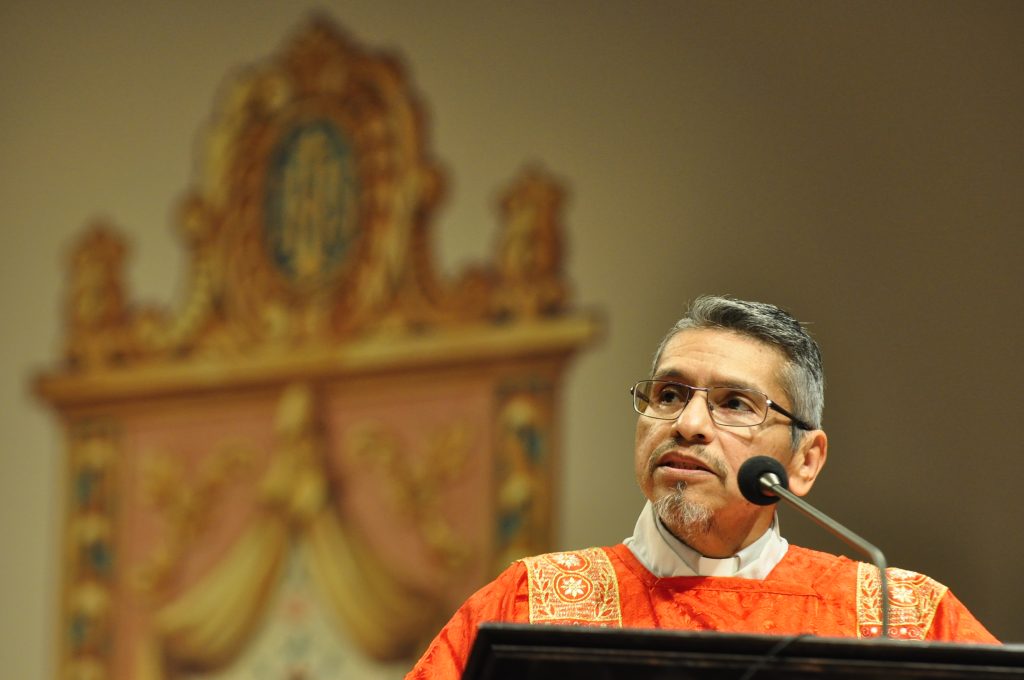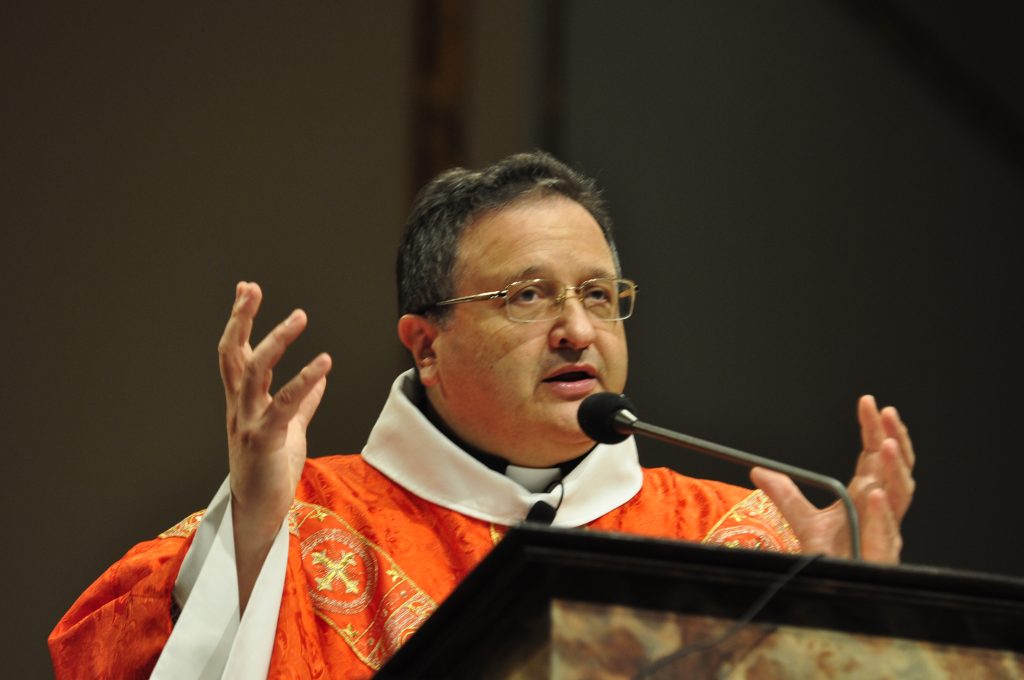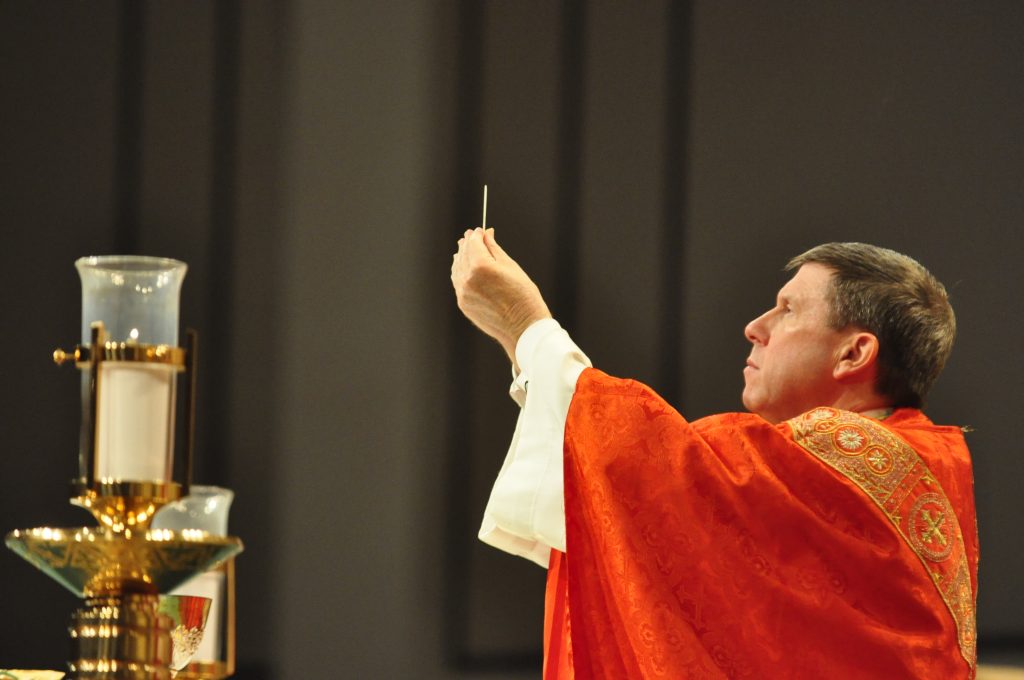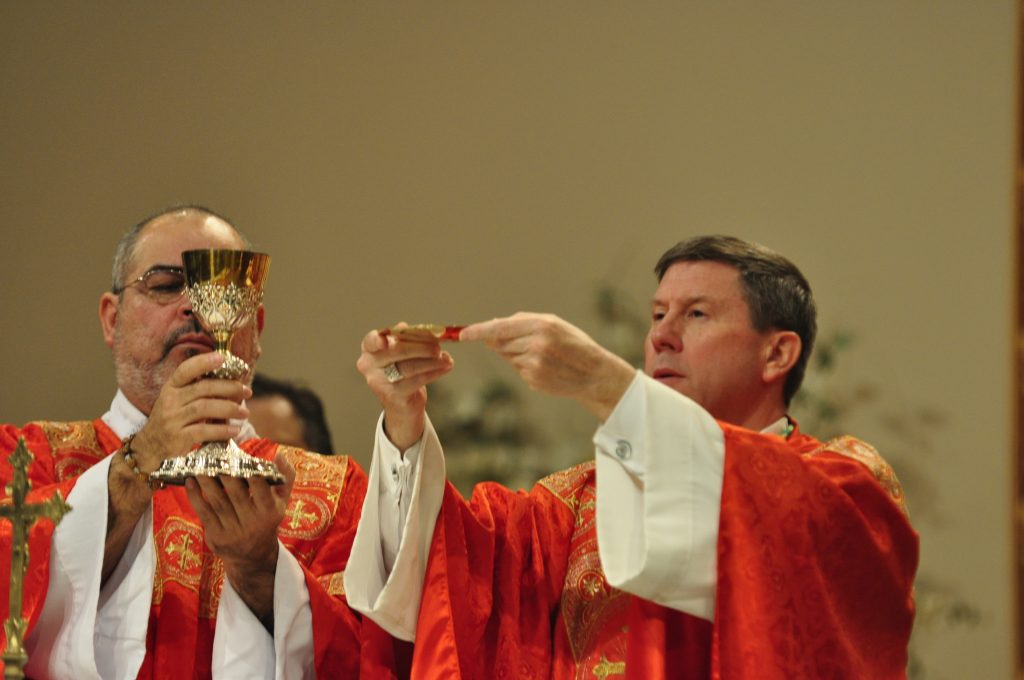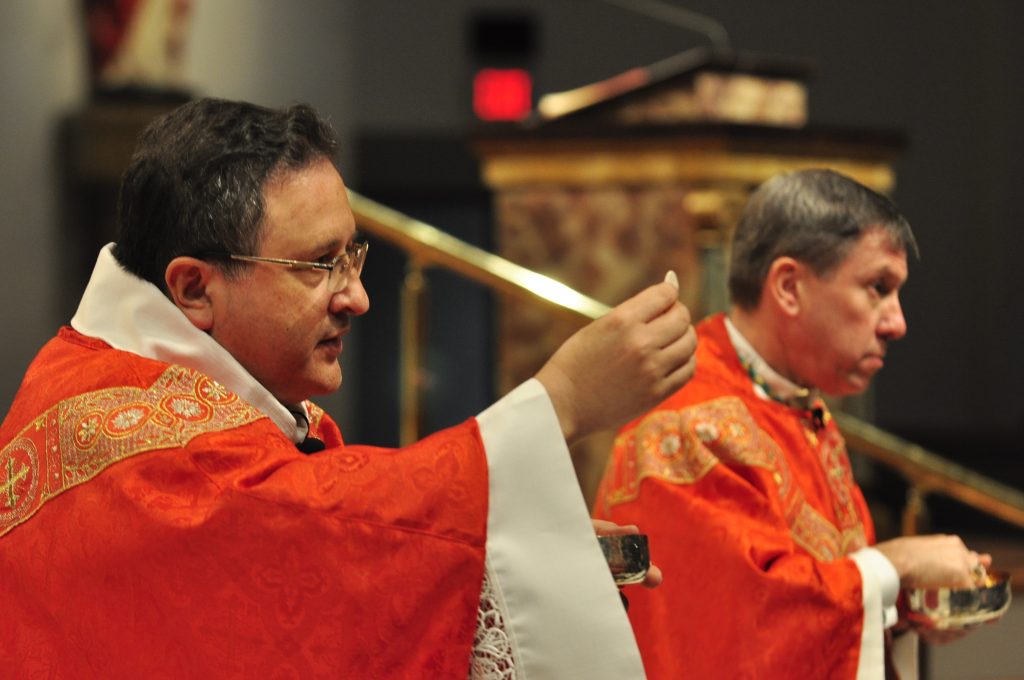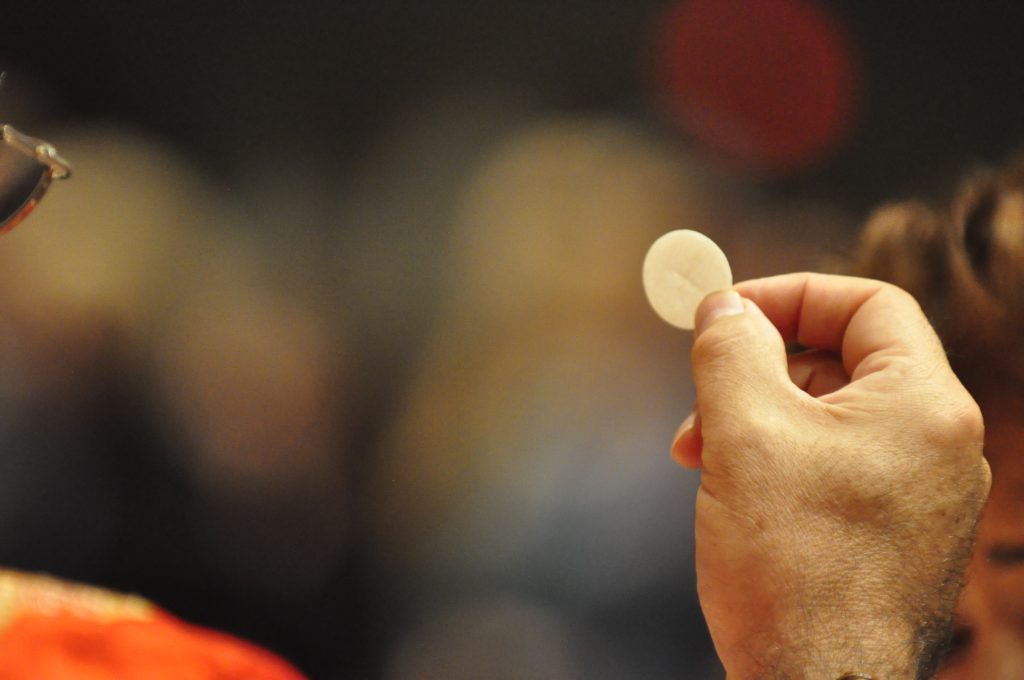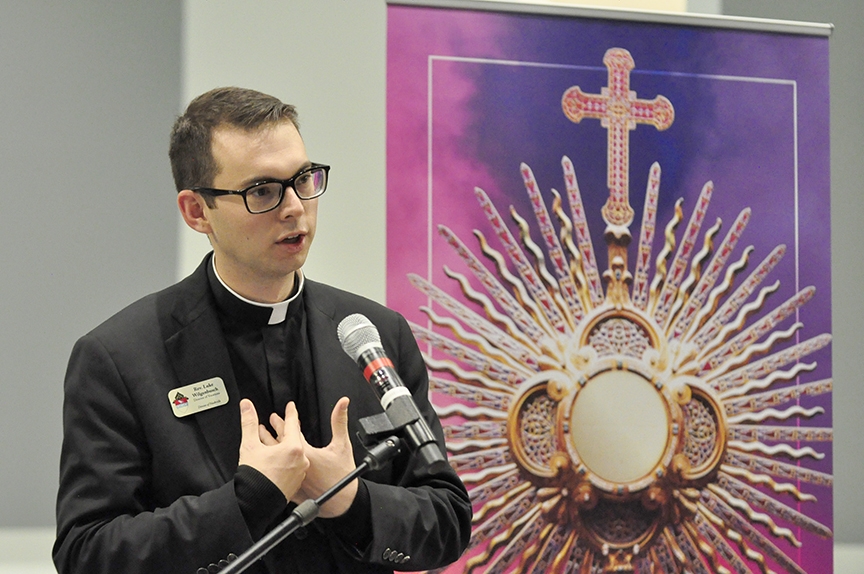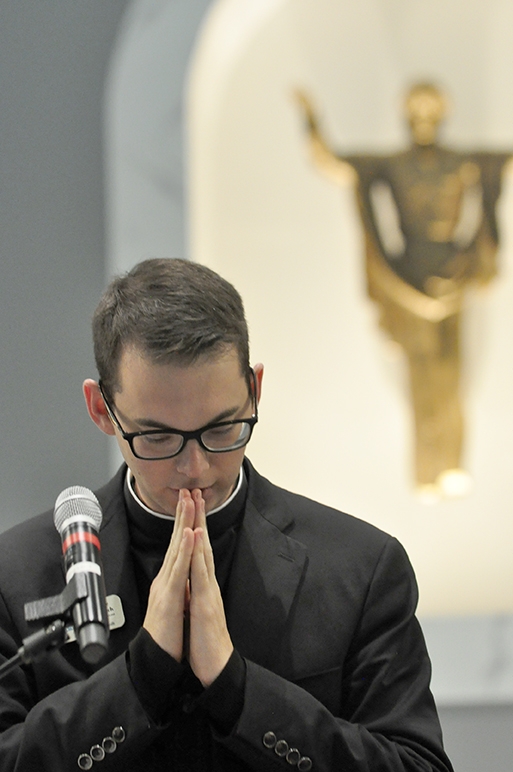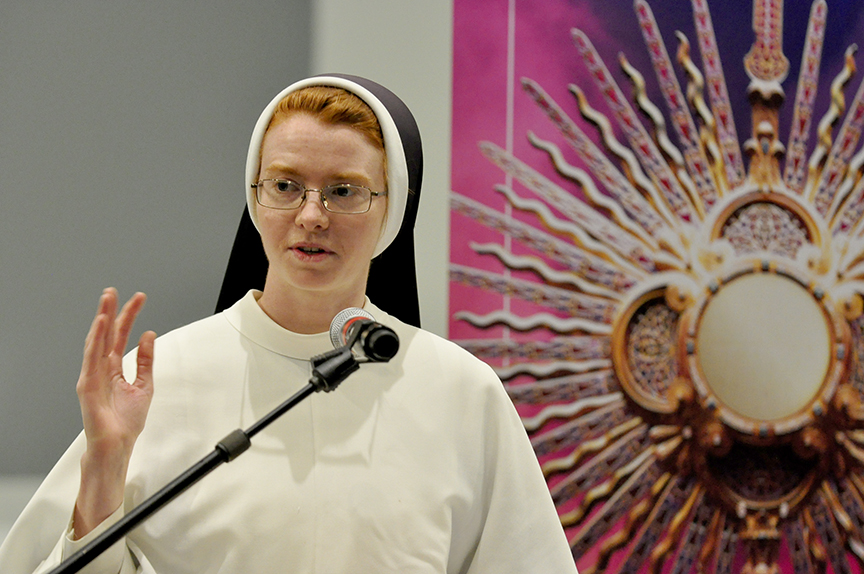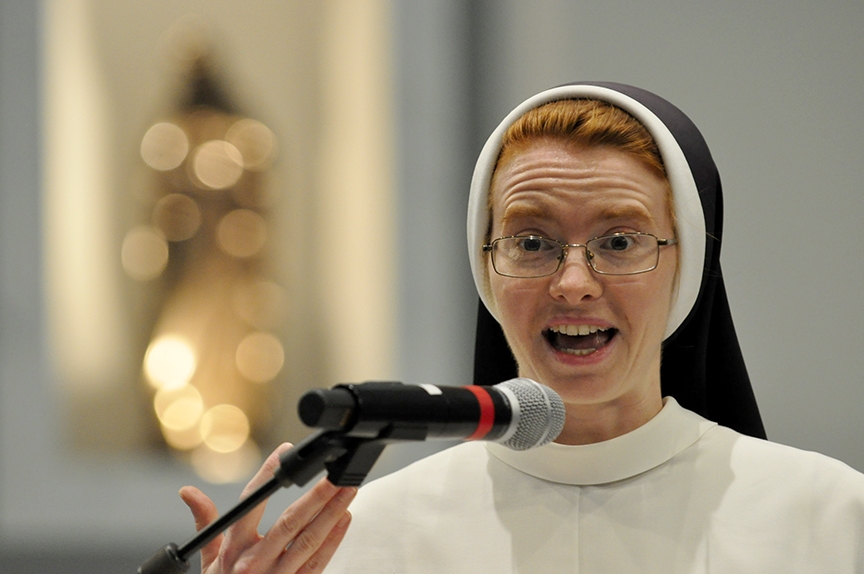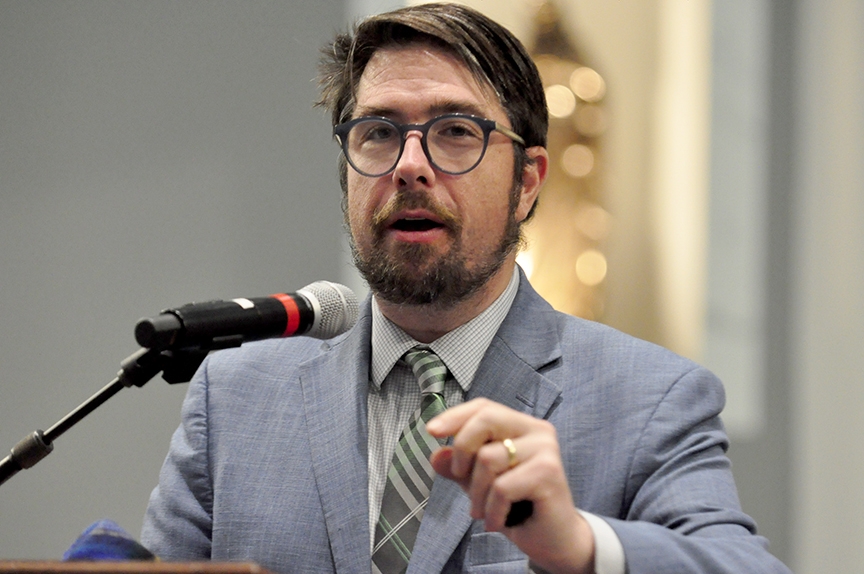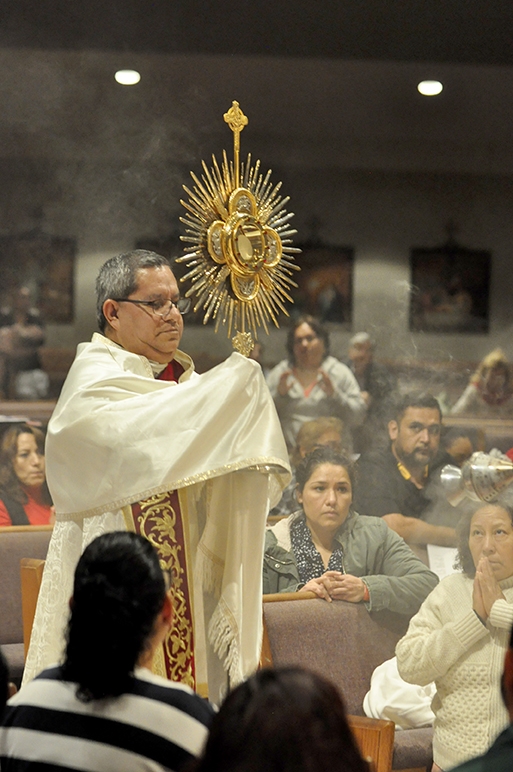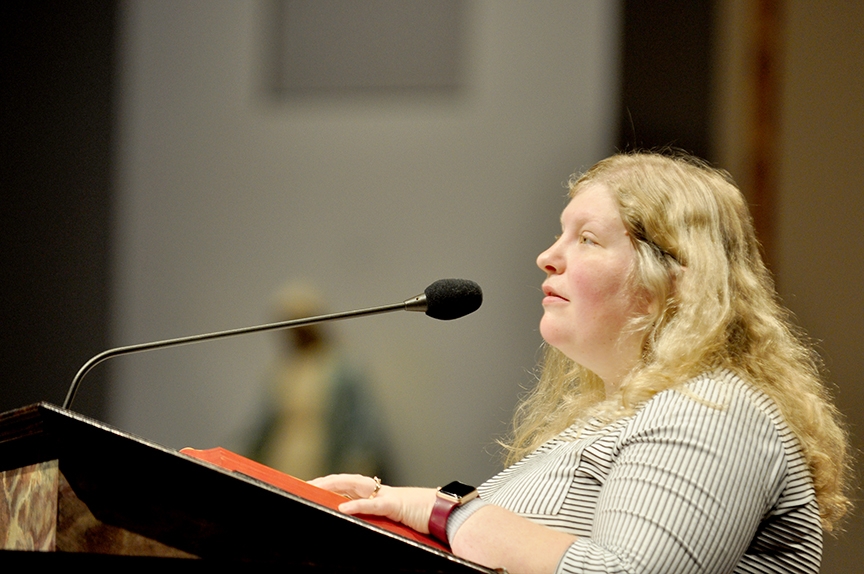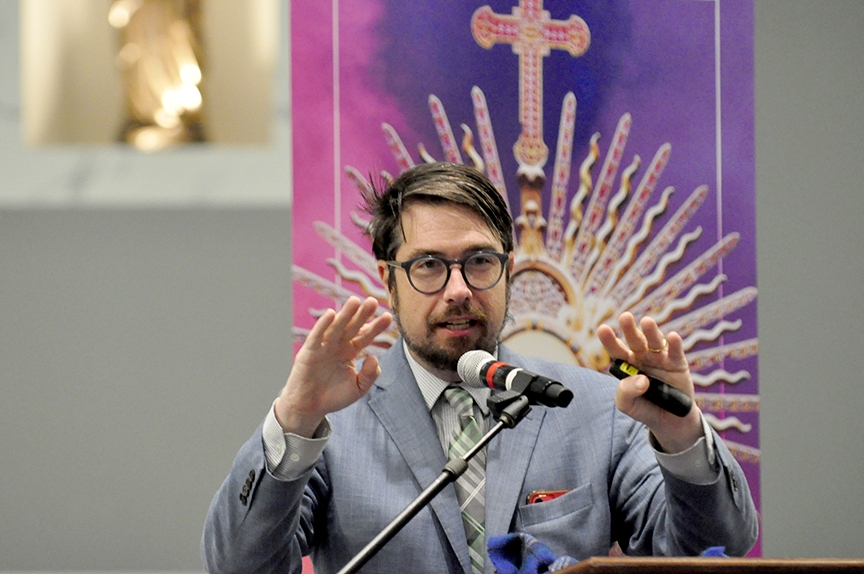
The National Eucharistic Revival is about more than explaining the real presence of Christ in the Eucharist, said Dr. Timothy O’Malley, a professor at the University of Notre Dame and a speaker at the Diocese of Nashville’s Eucharistic Revival Conference.
“It’s something more,” he said. “It’s a renewal of the life of the Church. And it’s needed.”
O’Malley was one of several speakers at the diocesan Eucharistic Revival Conference, which was held Saturday, Nov. 12, at the Catholic Pastoral Center. The conference is part of the larger National Eucharistic Revival, a three-year initiative of the U.S. Conference of Catholic Bishops that will culminate with a National Eucharistic Congress in Indianapolis in 2024.
O’Malley is a member of the Executive Team for the USCCB’s Eucharistic Revival. He also serves as President of the Society for Catholic Liturgy, Director of Education at the McGrath Institute for Church Life, and Academic Director of the Notre Dame Center for Liturgy.
“The doctrine of the real presence is not something that floats out there as a theory for what happens to the Eucharist, but it’s linked most of all to what God is doing at every Mass,” O’Malley said. “The doctrine of real presence is the doctrine of God’s activity in our lives.”
“The task of this revival is to foster a culture where the Church becomes evermore what the Church is called to be,” O’Malley said. “The doctrine of the real presence is much about who we are as a church, a communion of love that keeps alive the memory of salvation offered by Jesus Christ, empowering men and women to live this Eucharistic life in the world.”
In the celebration of the Eucharist is the renewal of the memory of Christ’s passion, O’Malley said. “It’s the memory that makes sense of all other things in life.”
The National Eucharistic Revival was sparked, in part, by reports that show a large number of Catholics don’t believe in the real presence of Christ in the Eucharist.
“It looks like bread and it looks like wine. Only faith allows you to make sense of it,” O’Malley said.
“You don’t immediately see what’s there. It’s why in the early Church they constantly had to caution new Christians to recognize that though they didn’t see anything marvelous in the Eucharist, that was OK, because what was visible, what is touchable, what can be sensed is not everything,” he added. “What looks like bread and what looks like wine is the body and blood of Christ given to us for the light of the world. This trains our eyes to see differently.”
The celebration of Mass in parishes “is not just a gathering of like minded people,” O’Malley said. “There is a foretaste of heaven, not only in the Eucharistic presence of the Lord of course, but even in the gathering because we belong to the communion of saints. That is the Church. … We have to become this.
“That’s why Eucharistic presence does not contrast with love of neighbor,” he added. “The one who recognizes the presence of the Lamb once slain loves their neighbor all the more, especially if that neighbor is obnoxious, annoying, not beautiful. That is where our Lord wants to appear. He wants to appear in the hiddenness of suffering flesh. On the streets where those who hunger and thirst, there he is.
“It’s the presence of the Lord in the Eucharist that shapes our vision to see him there in those whose flesh cries out for love,” he said. “Every time you respond with love, the world becomes a space of communion, of hospitality, of friendship.”
‘It fits exactly’
Father Luke Wilgenbusch, the director of vocations for the Diocese of Nashville, spoke on the prefiguration of the real presence of God in the Eucharist in the Old Testament.
“When God was beginning to reveal himself to the Israelites, to the Jewish people, he had in mind everything we encounter in the New Testament,” Father Wilgenbusch said. “Given God had this plan in his mind, in the secret of his heart from all of eternity, we recognize that there were things that happened, there were things that were said, people in the Old Testament that were pointing toward things that only become fully known and fully revealed in the New Testament.”
The prefiguration of the real presence in the Eucharist stretches all the way back to Adam and Eve in the Garden of Eden where they were living in the presence of God. “For them the garden was a kind of temple,” Father Wilgenbusch said, and when the Israelites later built the temple to God’s specifications “that’s a kind of restoration of the Garden.”
“The temple was recovering that union of God and man,” Father Wilgenbusch said.
Within the temple, the Israelites kept the bread of presence, also known as the showbread, Father Wilgenbusch said.
“When they would come and gather for these feasts, the priests would go into that holy place and they would take out the table, that golden table with the bread on it, and they would lift it up and show people the bread of the presence, and they would say to them ‘Behold God’s love for you,’” he said.
“Seeing the bread was their closest way to see the very face of God,” Father Wilgenbusch said. “And at that moment when they saw, what were the words they heard? Behold God’s love for you.”
In the New Testament, Jesus tells the Pharisees, who were complaining that his disciples were eating on the Sabbath, “‘I tell you something greater than the temple is here,’” Father Wilgenbusch said. “The only thing greater than that, than the temple, the dwelling place of God, this bread which symbolizes God’s everlasting love, his presence among his people, the only thing possibly greater than that is God himself. And that’s exactly what Jesus is saying he is.”
“Where this all goes, of course, is to the Last Supper when Jesus takes bread and He says ‘this is my body,’” Father Wilgenbush said. “Where would the idea even come from to identify bread with a person? Well we can see in this context, it makes a whole lot of sense because they had this notion that there was a bread which was the closest tangible experience they had to God’s presence. … It fits exactly in with what God had been preparing us for. This clearly is what he had in mind.”
‘Jesus wants to be with you’
“In order to recognize Jesus through his love, we have to become familiar with him. We have to spend time with him,” said Sister Felicity Heither, OP, of the Dominican Sisters of St. Cecilia and another speaker at the conference.
“It’s not so much that you have to draw close to Jesus in the Blessed Sacrament so much as you have to let the Blessed Sacrament draw close to you,” she said. “And when He is close to you, you will recognize the true presence of Jesus through His love.”
“Jesus wants to be with you and he chooses to do so in a radical way through the Blessed Sacrament,” Sister Felicity said. “Even more than being with you, He wants to be one with you through the Blessed Sacrament, to be one thing only. The lover Jesus wants to be united with the one he really loves, which is you.
“When you go up to Communion, you bring everything you have and everything you are, and you’re united to everything He is,” she added. “So you never receive Communion without being loved.”
It is important to prepare ourselves to receive Christ in the Eucharist, Sister Felicity said. “Run to the confessional. Run with confidence to the mercy of God,” she said. “In confession we bring sins, both mortal and venial, into the loving gaze of Christ. In the light of His love, all evil flies away, and light, peace, and love take its place.”
‘Workers of the truth’
More than 300 people attended the conference, which featured talks in both English and Spanish. One of the Spanish speakers at the conference was Father Miguel Solorzano, the pastor of St. Bartholomew the Apostle Church in Katy, Texas, who was the homilist at the opening Mass of the conference.
The first reading for the Mass on the day of the conference was taken from the Third Letter of John, in which he discusses the difficult issues missionaries faced in the early Church, Father Solrzano noted.
“John is telling us we are no longer strangers, but we’re workers of the truth,” he said. “And in the Eucharistic Revival that is what we are supposed to do.”
The day of the conference was the Memorial of St. Josephat, Bishop and Martyr. St. Josephat worked to reunite the Orthodox Church with the Roman Church, Father Solorzano said. “Josephat gave his life for the unity of the Church. … My dear brothers and sisters in Christ, may this Eucharistic renewal bring unity, bring renovation to the Holy Church.”
